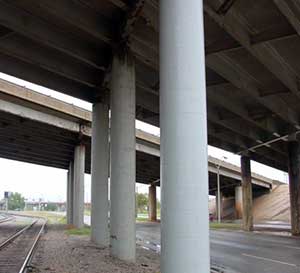The State of Our Nation’s Bridges: A Call for Action Recently, a comprehensive report released by Transportation for America painted a grim picture of the condition of our nation’s bridges. According to the report, over 18,000 bridges located in urban areas across the U.S. are considered structurally deficient. To put this into context, in cities like Los Angeles, an average of 396 vehicles pass over a deficient bridge every single second. This staggering statistic highlights the magnitude of the problem we face. In fact, there are more deficient bridges in metro areas alone than the total number of McDonald’s restaurants in the entire country, as noted by James Corless, the director of Transportation for America. Even more alarming is the fact that 75% of all daily traffic in major metropolitan areas crosses at least one of these deficient bridges. Transportation for America defines a deficient bridge as one that has exceeded its expected lifespan of 42 years. Many of the bridges we rely on most frequently today were built decades ago, with some exceeding 50 years in age. The report, titled “The Fix We’re In For: The State of Our Nation’s Bridges,†follows the unexpected closure of a crucial commuter bridge in Louisville, Kentucky. Inspectors discovered two dangerous cracks in the load-bearing portion of the structure, prompting the immediate shutdown of the bridge. This sudden closure left approximately 80,000 daily commuters scrambling to find alternative routes. This alarming report serves as a stark reminder of the tragic events that unfolded on August 1, 2007, when the I-35W bridge in Minneapolis collapsed, causing injuries and fatalities. That bridge, constructed in 1967, had served a population that grew by 42% between 1990 and 2003. For years, many taxpayers and political leaders have neglected the necessary maintenance and modernization of our aging infrastructure. However, history shows that investing in transportation and infrastructure is a proven driver of economic growth. Such investments not only create jobs but also improve connectivity for people, goods, and services while reducing traffic congestion, fuel costs, and, most importantly, saving lives by ensuring that critical structures are restored before they fail. One of the biggest hurdles we face is the inefficient allocation of federal funding. Surprisingly, states are permitted to divert up to half of their federally allocated funds meant for bridge repairs to other projects without any oversight. Transportation for America advocates for reallocating more resources to states specifically for bridge repair, with a strict mandate that these funds must be used solely for maintaining and repairing bridges. In order to maximize taxpayer dollars, it’s crucial to prioritize repair over replacement. Methods that provide long-term solutions include the use of advanced carbon fiber repair systems, such as those provided by HJ3 Composite Technologies. Carbon fiber has a proven track record of successfully restoring bridges and extending the lifespan of existing structures that are nearing or surpassing their expected lifespans. Rebuilding these bridges from scratch is often unnecessary; with proper maintenance, their lifespans can be extended by 50 to 100 years. HJ3, a respected leader in the composites industry, is renowned for its exceptional reputation, cutting-edge products, top-tier engineering design services, and on-site quality control. Allowing our roads and bridges to deteriorate over time will cost state and local governments billions more than the cost of regular, timely maintenance. If you’re interested in learning how HJ3’s carbon fiber solutions can make a difference in your state, feel free to reach out to HJ3 at [insert email] or call them directly at 1-877-303-0453. Finished Product Packaging Equipment Finished Product Packaging Equipment,Professional Electric Toothbrush Packaging Line,Professional Electronic Product Packaging Line,Electronic Product Packaging Line Shenzhen Yonglun Intelligent Equipment Technology Co., LTD , https://www.foyooo.comThe Fix We’re In For

These Overpass Supporting Columns Have Been Strengthened with HJ3's FRP System
â€